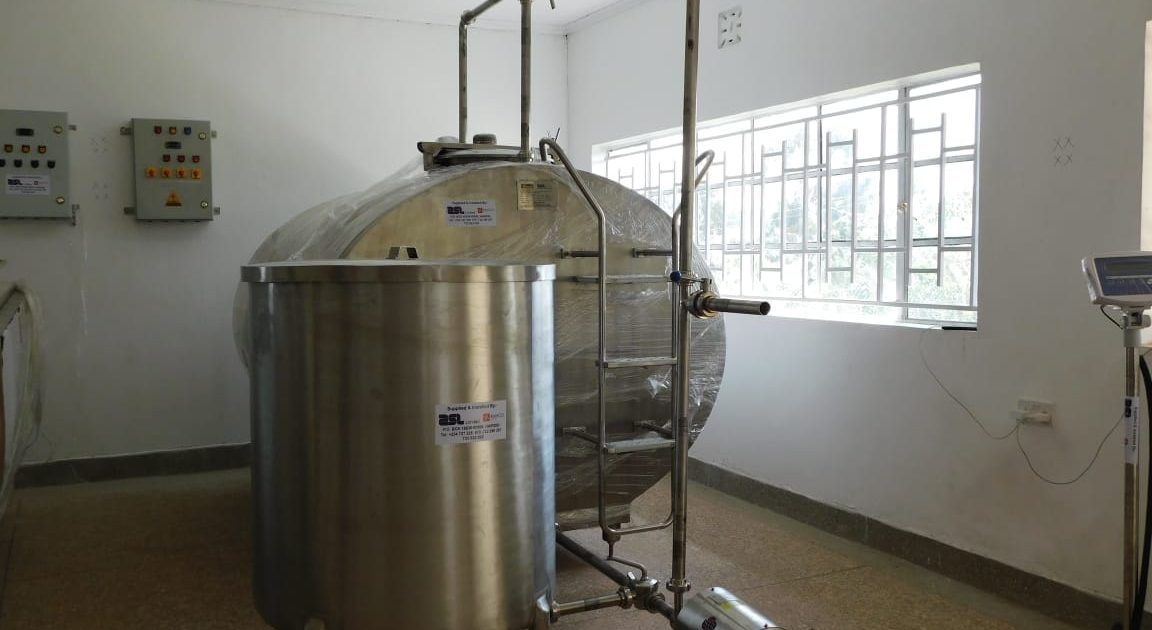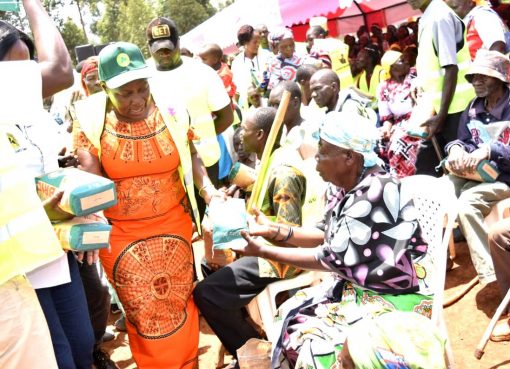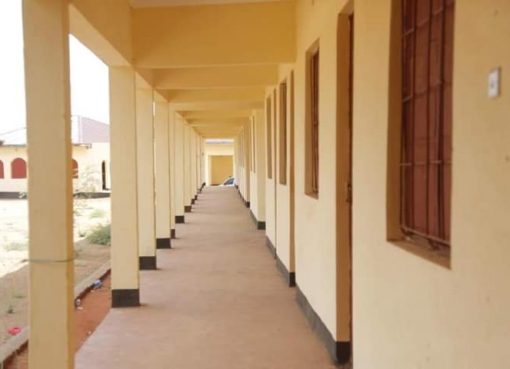Milk production in Nakuru has been rising gradually in the past four years due to adoption of good agricultural practices by small holder farmers and increased investments in milk collection and cooling infrastructure by the Ministry of Agriculture, the County Government and private sector players.
Governor Lee Kinyanjui said implementation of the Sh 570 million Nakuru County Dairy Value Chain Strategic Plan (NCDVCSP) and support from National Government’s Agriculture Sector Development Support Programme Phase Two (ASDSP II) has transformed many smallholder farms in the region into profitable ventures with farmers reaping the benefits of embracing new dairy technologies.
“Nakuru County now produces an average of 300 million litres of milk annually, an improvement of over 25 per cent since 2019 making it the third leading devolved unit in milk production in the country with 381,600 dairy cattle after Kiambu and Murang’a counties,” noted the Governor.
According to Mr Kinyanjui this has also been made possible through sustained empowerment by processors such as New KCC and Brookside Dairy Limited through training on good dairy practices that encourage growth in milk volumes.
“Thanks to interventions put in place by the County Government, Ministry of Agriculture, Livestock and Fisheries through the ASDSP II programme and our partners in the private sector, dairy farmers in Nakuru are pocketing at least Sh 1.6 million daily in raw milk sales to processors. The growing fortunes of dairy have seen nearly every household in all the 11 Sub Counties, especially those in the rural areas, keep at least one dairy cow, as families seek a regular source of income,”
Dairy farmers in Nakuru earned Sh 11.7 billion from the sale of 300 million litres of milk last year with exotic breeds accounting for 60 per cent of milk production and indigenous ones 40 per cent.
In an interview with the press the Governor indicated that the joint initiative by his administration, the National Government and private sector partners incorporates upgrading local breeds to boost milk production.
“Farmers have been upgrading their local breeds through artificial insemination with support from both levels of government and other stakeholders. Over 6,000 farmers have used superior semen from approved bulls to serve cows so that the subsequent generation is improved to pedigree breed.”
He said the cows have been serviced with various breeds that include Guernsey, Friesian, Ayrshire, Boran, Jersey and Sahiwal. Under the ASDSP II programme to over 5,900 farmers in Kuresoi North, Molo, Njoro, Bahati, Subukia, Naivasha and Bahati sub-counties have received fodder planting material for the establishment of bulking sites to help them increase protein content in animal feed. The farmers have also been taught on establishment, preparation and storage of fodder.
Training of a further 5,700 farmers through ASDSP II programme has also addressed quality and safety of dairy products, low milk production, inefficient markets and unstable market prices, inappropriate land-use practices and post-harvest losses of dairy products.
“Climate-smart actions in the dairy sector in Kenya have a huge potential in spurring growth in the milk value chain. That’s why feed preparation and conservation is a critical aspect in sustaining production throughout the year,” added the Governor.
Mr Kinyanjui observed that his administration has already handed over two-3000 litres bulk milk cooling plants to Ndafithi Self Help Group and Maiella Dairy Cooperative Society respectively.
The total cost of the projects was Sh 23 million. The Sh 8.9 million Kirima Milk cooling facility in Naivasha Sub-County is also operational.
The County boss said his administration has allocated Sh 7 million to seven dairy farmer cooperatives to modernize their operations. The involvement of co-operatives along the dairy value chain he said has also enabled farmers to better manage transaction costs involved during the marketing of raw milk.
Mr Kinyanjui stated that his administration has brought together 13 milk farmer groups under the umbrella Nakuru County Union of Dairy cooperatives which were jointly yielding 40,000 litres of milk per day.
“Brokers and milk transporters who profiteer from dairy farmers’ sweat will soon be out of the way as we invest in dairy infrastructure while farmers use cooperatives to directly engage processors.
He noted once cooperative movement is fully adopted in the daily subsector, farmers will be able to get rid of costly transporters, and thus get more share of the producer price paid by processors.
“A co-operative mode will enable Kenya to modernize its dairy sector where farmers will be compelled to sell milk via dairy societies that also become channels for quality monitoring, credit access as well as dairy husbandry training,” added Mr Kinyanjui.
Traditionally, transporters collect raw milk from farmers and market the same to various outlets only for farmers to be paid at a set price minus Sh3 a litre as transport fee. This sees transporters bargain for better prices but retain low prices for farmers.
Mr Kinyanjui notes that the county had spent Sh 40 million on a free livestock immunization programme in 11 sub-counties and has distributed Artificial Insemination kits to Dairy Cooperatives as a way of improving dairy animal breeds.
The national government has further distributed seven milk automated teller machines valued at Sh 1.7 million to farmers in Naivasha, Gilgil, Bahati, Subukia, Njoro, Molo and Kuresoi North sub counties.
Mr Kinyanjui affirms that towards improving access to markets for dairy farmers, the County Government has been focusing on rehabilitating and developing infrastructure in rural and farming areas.
“Every year we have been making Sh 1 billion budgetary allocation towards improving road infrastructure in farming areas of this county. We want farmers to have easy access to markets and industries to acquire raw materials without incurring huge costs” says the governor.
Acting County Director of Livestock Production, Ms. Virginia Ngunjiri said the devolved unit has set up 11 milk cooling stations and milk sheds for eleven Cooperatives across the devolved unit to reduce the time farmers take in moving the perishable commodity to the facilities.
The facilities also have standby generators to mitigate power outage woes, boosting their output. In addition the cooling facilities are bulking, chilling and pasteurizing raw milk before it is transported to processing facilities
“They are also enabling dairy farmers to store their milk and sell it to processors at a good price and at their convenience,” Ms Ngunjiri indicated.
Among the beneficiaries are Biashara Wakulima Dairy Cooperative from Biashara Ward from Naivasha Sub-county who have received two milk cooling facilities with a total capacity of 5,000, Teta Farmers in Kuresoi South who have gotten a 3000 Litres cooling plant, Elbam Cooperative Society in Molo Sub-County (3000 ltr) and Burgei in Rongai sub county (3000ltr).
County Government in partnership with Egerton University have also launched the first pilot solar milk cooler in Bahati Sub County at the new Nakuru Fresh Dairy Farmers Cooperative Society while Starlight and Rongai Acacia dairy cooperatives equipment in Kuresoi North and Rongai sub counties respectively have been equipped dairy value addition machines.
The equipment includes 500 litre milk pasteurizers, 300 litre milk dispensers and milk cooling systems of 1000 litres.
According to the county’s department of Agriculture, Livestock and Fisheries, 70 per cent of the total land acreage in Nakuru is agriculturally productive, with a huge capacity for livestock production, especially for dairy cows.
Many farmers in the region are making good profits with all the country’s major processors collecting milk both in the lower and high altitude regions of the county.
By Anne Mwale and Elizabeth Simiyu





